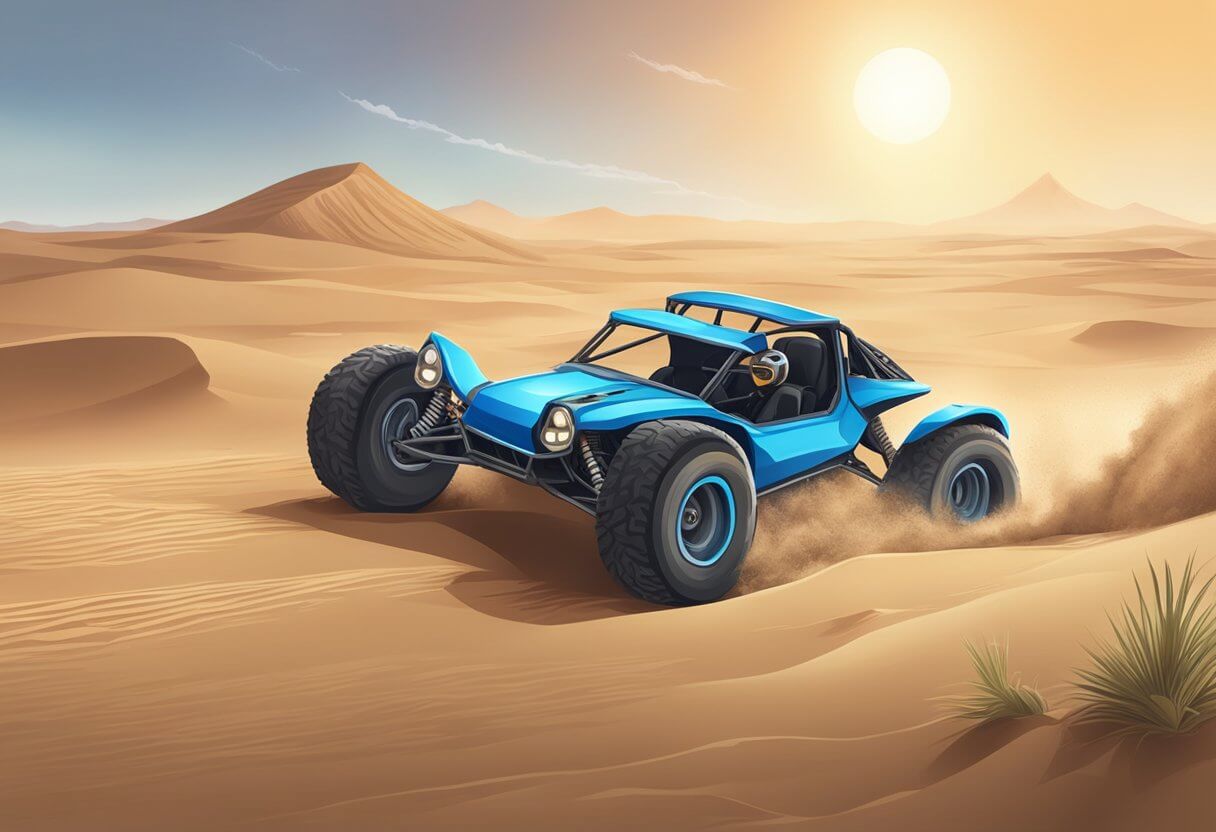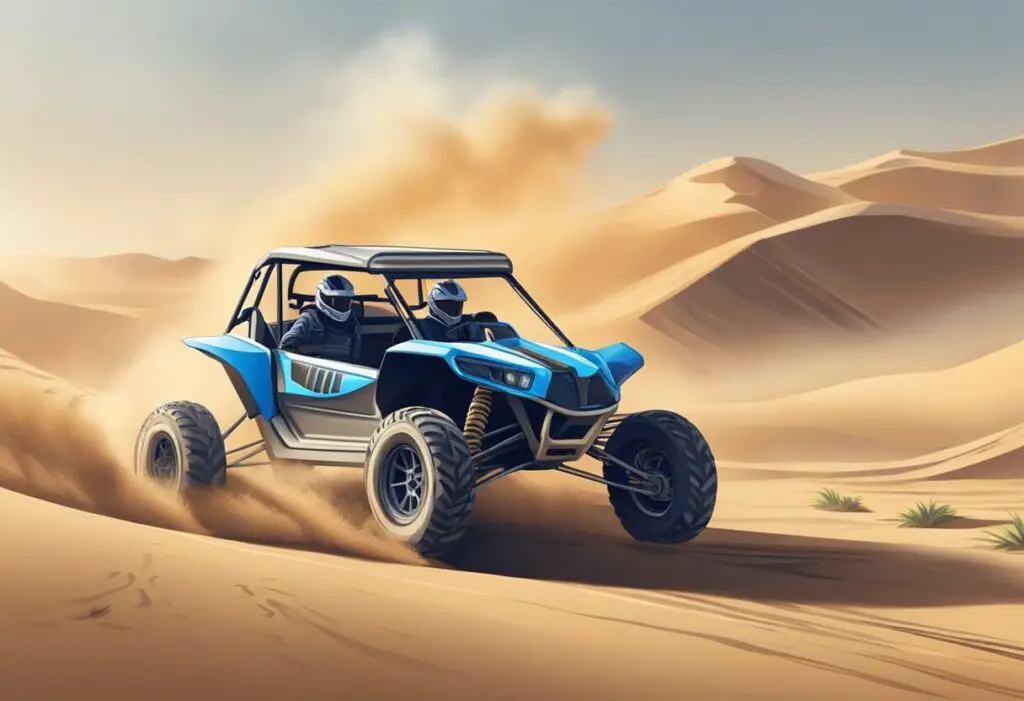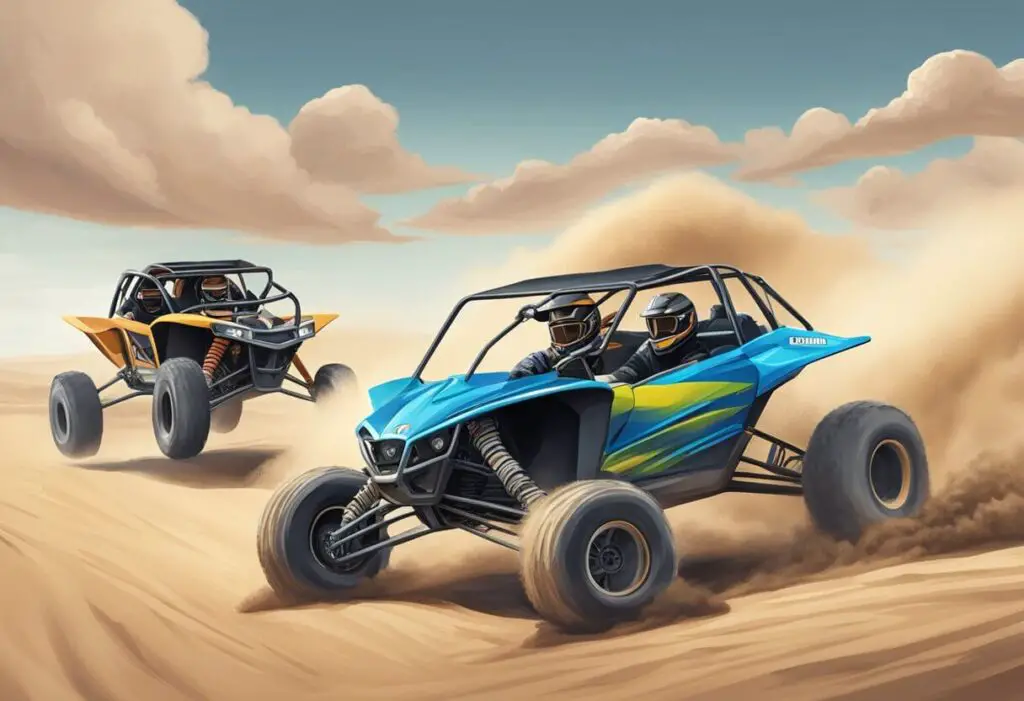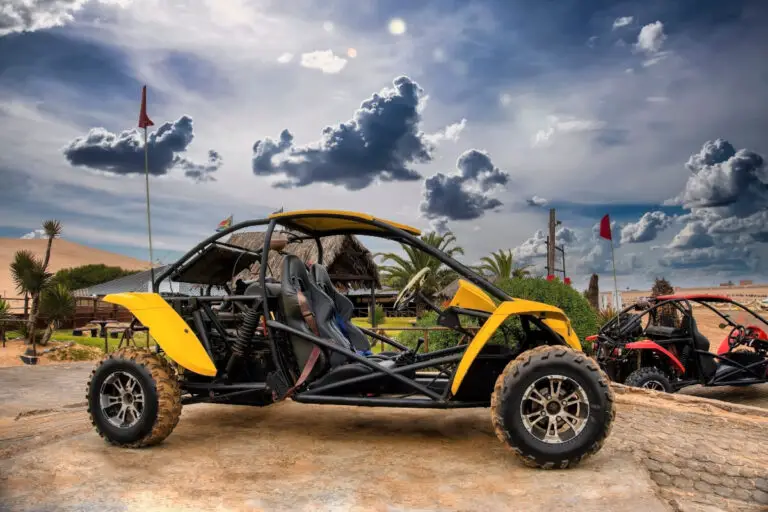Dune Buggy vs ATV: Which is the Better Off-Road Vehicle?

Dune buggies and ATVs are both off-road vehicles that offer unique advantages depending on what you’re looking for. They have their own strengths and weaknesses, and it’s important to understand the differences between the two before making a decision.
A dune buggy is typically an open vehicle with no doors or roof, and it resembles a large go-kart. It has a roll cage for safety, and it’s primarily designed for smooth surfaces such as sand dunes. On the other hand, an ATV is a four-wheeler that doesn’t have a roll cage and is suitable for extreme off-roading. It’s a versatile off-roading tool that can handle different landscapes and terrains.
When comparing dune buggies and ATVs, there are several factors to consider, such as performance capabilities, design and build, terrain suitability, use cases, cost considerations, legal and environmental concerns, personal preference, and accessibility. Each of these factors plays an important role in determining which vehicle is right for you.
Key Takeaways
- Dune buggies are suitable for smooth surfaces such as sand dunes, while ATVs are designed for extreme off-roading.
- The choice between a dune buggy and an ATV depends on several factors, including performance capabilities, terrain suitability, cost considerations, and personal preference.
- Understanding the differences between dune buggies and ATVs is important before making a decision.
Dune Buggy and ATV Defined

Dune buggies and ATVs are both off-road vehicles that are designed to handle rough terrain. While they share some similarities, there are also some key differences between the two.
Dune Buggy
A dune buggy is a lightweight vehicle that is designed for use on sand dunes and other smooth surfaces. They typically have an open frame with no doors or windows, and are powered by either a gasoline or electric engine. Dune buggies are often used for recreational purposes, such as racing or exploring sand dunes.
ATV
An ATV, or all-terrain vehicle, is a four-wheeled vehicle that is designed for use on a variety of terrains, including dirt, mud, and snow. They are typically powered by a gasoline engine, and come in a range of sizes and styles. ATVs are often used for recreational purposes, such as trail riding or hunting, but they are also used for work purposes, such as farming or forestry.
Differences
There are several key differences between dune buggies and ATVs. One of the biggest differences is their design. Dune buggies are typically open vehicles with no doors or windows, while ATVs are enclosed and offer more protection from the elements.
Another difference is their intended use. Dune buggies are designed for use on sand dunes and other smooth surfaces, while ATVs are designed for use on a variety of terrains. This means that dune buggies are not as versatile as ATVs, but they are better suited for certain types of terrain.
Finally, there is a difference in the number of passengers each vehicle can accommodate. Dune buggies are typically designed to seat two or more passengers, while ATVs are usually designed for a single rider. This makes dune buggies a better option for group adventures, while ATVs are better suited for solo riders.
Performance Comparison

Speed and Power
When it comes to speed and power, ATVs are generally faster and more powerful than dune buggies. ATVs are designed for speed and acceleration, and they have more horsepower than dune buggies. They can reach top speeds of up to 80 miles per hour, while dune buggies typically have a top speed of around 60 miles per hour.
Handling and Stability
Dune buggies are generally more stable and easier to handle than ATVs. This is because dune buggies have a wider wheelbase and a lower center of gravity, which makes them more stable on uneven terrain. ATVs, on the other hand, have a narrower wheelbase and a higher center of gravity, which makes them more prone to tipping over on rough terrain.
Off-Road Capabilities
Both dune buggies and ATVs are designed for off-road use, but they each have their own strengths and weaknesses. Dune buggies are ideal for driving on sand dunes and other smooth surfaces, while ATVs are better suited for rough terrain and steep inclines. Dune buggies are also better for driving in groups, as they can seat multiple passengers, while ATVs are generally designed for single riders.
Design and Build

Structure and Durability
Dune buggies and ATVs have different designs and builds to suit their intended purposes. Dune buggies have a lightweight, open structure that is built for speed and maneuverability on sand dunes and other smooth surfaces. They typically have a roll cage made of steel or aluminum to protect the driver and passengers in case of a rollover. Some models may have additional reinforcement in the form of side panels or a roof.
On the other hand, ATVs have a more rugged and sturdy design with a solid frame and four wheels. They are built to handle rough terrain and can withstand impacts from rocks and other obstacles. ATVs also have a suspension system that absorbs shocks and provides a smoother ride over bumpy terrain.
Safety Features
Both dune buggies and ATVs have safety features that are designed to protect the driver and passengers. Dune buggies typically have a roll cage that provides protection in case of a rollover. Some models may also have seat belts, harnesses, and helmets to further enhance safety.
ATVs, on the other hand, have a range of safety features that include a solid frame, four wheels, and a suspension system. They also have handlebars that allow the driver to maintain control of the vehicle and avoid accidents. Additionally, some models may have features such as headlights, taillights, and turn signals to improve visibility and safety while riding at night or in low-light conditions.
Terrain Suitability

When it comes to terrain suitability, both dune buggies and ATVs have their own strengths and weaknesses. In this section, we will take a closer look at the suitability of each vehicle for different types of terrain.
Sand and Dunes
Dune buggies are specifically designed for sand and dune terrain. They are lightweight and have a wide wheelbase, which allows them to glide over the sand with ease. The large wheels and tires provide excellent traction, making it easy to navigate through the dunes. Additionally, the open design of the dune buggy provides an unobstructed view of the surrounding landscape, making it a great option for scenic rides.
On the other hand, ATVs can also handle sand and dunes, but they are not as well-suited for this terrain as dune buggies. They are heavier and have a narrower wheelbase, which can make it difficult to maneuver through the sand. However, ATVs are more versatile and can handle a variety of terrains, including rocky trails and wooded areas.
Trails and Woods
When it comes to trails and wooded areas, ATVs are the better option. They are designed to handle rough terrain and can navigate through tight spaces with ease. The narrow wheelbase and four-wheel drive make it easy to maneuver through rocky trails and wooded areas. Additionally, the suspension system on an ATV is designed to absorb shock, providing a smoother ride on rough terrain.
Dune buggies, on the other hand, are not well-suited for trails and wooded areas. The wide wheelbase and open design make it difficult to navigate through tight spaces, and the suspension system is not designed to handle rough terrain. However, dune buggies are a great option for cruising on smooth surfaces, such as dirt roads and open fields.
Use Cases

Dune buggies and ATVs are both off-road vehicles that have their unique use cases. Here are some of the common use cases for both:
Recreational Use
Dune buggies are popular for recreational use in sandy environments such as beaches and sand dunes. They are designed to handle high speeds and provide an exhilarating ride. Dune buggies are usually open vehicles with no doors or windows, making them ideal for warm weather destinations. On the other hand, ATVs are versatile vehicles that can be used for recreational purposes in a variety of terrains. They are great for exploring trails, forests, and rocky terrains.
Racing
Dune buggies are built for speed and are commonly used for off-road racing. They have a low center of gravity and a lightweight design that makes them agile and fast. Dune buggies are often used in desert racing, where they can reach high speeds on the open sand. ATVs are also used for racing, but they are more commonly used for motocross and other types of off-road racing.
Utility Work
ATVs are often used for utility work, such as hauling equipment and supplies in remote areas. They are also used by farmers and ranchers for herding livestock and checking fences. Dune buggies, on the other hand, are not designed for utility work and are primarily used for recreational purposes.
Cost Considerations
Initial Investment
When it comes to the initial investment, dune buggies are generally less expensive than ATVs. According to Off Road Ranker, the average cost of a dune buggy can range from $1500 to $15,000, while the average cost of an ATV runs between $5000 to $15,000. However, the cost can vary depending on the model, brand, and features.
Maintenance and Repairs
Maintenance and repairs are an important factor to consider when choosing between a dune buggy and an ATV. ATVs require more maintenance than dune buggies because they have more moving parts, including an engine, transmission, and suspension. Regular maintenance, such as oil changes, filter replacements, and tire rotations, is necessary to keep an ATV running smoothly.
On the other hand, dune buggies have a simpler design and fewer moving parts, making them easier to maintain. However, if a dune buggy does require repairs, the cost can be higher than for an ATV due to the specialized parts and labor required.
Legal and Environmental Concerns
Regulations and Permissions
When it comes to off-roading, there are various regulations and permissions that need to be followed to ensure that you are not breaking any laws or endangering anyone. Both dune buggies and ATVs are subject to different regulations and permissions, depending on where you are located.
For instance, in some states, dune buggies are street-legal but must meet specific requirements before receiving registration. These requirements vary from state to state and depend on the dune buggy you purchase. On the other hand, ATVs are not street-legal in most states and can only be used for off-road purposes.
It is crucial to know and follow the regulations and permissions in your area before taking your off-road vehicle out for a ride.
Environmental Impact
Off-roading can have a significant impact on the environment, especially in sensitive areas such as sand dunes and wetlands. It is essential to be aware of the environmental impact of your off-roading activities and take steps to minimize them.
Dune buggies and ATVs can both cause damage to the environment, but the extent of the damage can vary. For instance, dune buggies can cause erosion and damage to sand dunes, while ATVs can cause damage to vegetation and wildlife.
To minimize the environmental impact of off-roading, it is essential to follow designated trails and avoid sensitive areas. Additionally, it is crucial to pack out all your trash and avoid leaving any marks on the environment.






